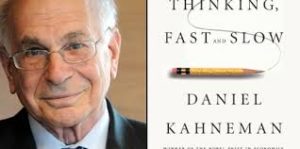Framing Shingles Vaccination
In October 2017, I posted a blog on Daniel Kahneman’s principle of loss aversion and how the emotion of losing something drives behavior more than winning the same amount. https://www.tildensst.com/2017/10/17/whats-on-the-other-guys-mind-loss-aversion/. A little more than a year later, I have been reminded of another Kahneman notion of framing.
My family doctor is an interesting guy for several reasons, one of which is that along with his doctor of osteopathy (DO) degree he holds a masters in business administration (MBA). During my recent annual physical our conversation turned to shingles vaccinations. Knowing that I am a skeptic of big pharma pushing unnecessary drugs (just look at the opioid epidemic!), he put it this way. “It depends on how the doc frames these results”:
1/3 No Shingles 1/3 Less Severe Form 1/3 Full Blown
A doc could say that with the vaccination, the risk of the more severe form of shingles is reduced by two-thirds (A). Or, equally correct, the doc could say that with the vaccination you still have a two-thirds chance of getting some form of shingles (B).
Basically, it comes down to a gamble. Research by Kahneman and his research partner Amos Tversky shows that since we are risk adverse (the topic of the October 2017 blog) most would gamble to get the vaccination if framed as A. However, if the doctor frames the choice as B, there would likely be a different outcome.
Incorporating the 2017 blog on loss aversion, there are three key Kahneman influenced principles to be mindful of when communicating business messages: 1 recognize that “the emotional tail wags the rational dog”; 2 be aware that decision makers weigh potential losses more heavily than they weigh gains and;3 appreciate that the words you choose to frame a proposal can play a major role in shaping decisions that get made.


As a proponent of Sandler, this example is right on. Every Sales Trainer I know, espouses that prospects buy on emotions and justify those emotions with logic. The strongest emotion is pain which includes fear, i.e. fear of loss. A prospect with out pain is a suspect(or better put has no motivation to buy what you are selling).
It was a very interesting take and illustration on “framing”. Kahneman does spend a good amount of time on the subject. However, Thaler (Nobel laureate in economics) and Sunstein, in their book Nudge draw on Kahneman and Tversky when discussing framing. My issue with them is that they promote their concept of “libertarian paternalism” and the use of framing to get people to do what THEY want them to do. What I have observed about modern government and bureaucracy is that they can’t resist incorporating “shaming” in to framing. Sunstein in particular reminds me of the patronizing, condescending, arrogance of an old-maid teacher of sixth graders.
Over my lifetime I have learned a veritable dictionary of patronizing phrases used by Sunsteinoids. They include: Any thoughtful person knows…; Everyone agrees…; People who truly care…; ad nauseum. I was hysterical when Thaler and Sunstein proposed to solve the transplant organ shortage with a nudge by passing a law that declared that when you die your body becomes the property of the state UNLESS YOU SAY OTHERWISE, IN ADVANCE.
Framing is a very important and effective communications method. It does, however, carry some conditions for ethical use. I find it hilarious that many are critical of the current wacko administration for using “fear of loss”, while the resistance uses the same or similar rhetoric. I say–a pox on both of their houses”
I believe the ethical aspects of framing deserve some investigation. Good blog!